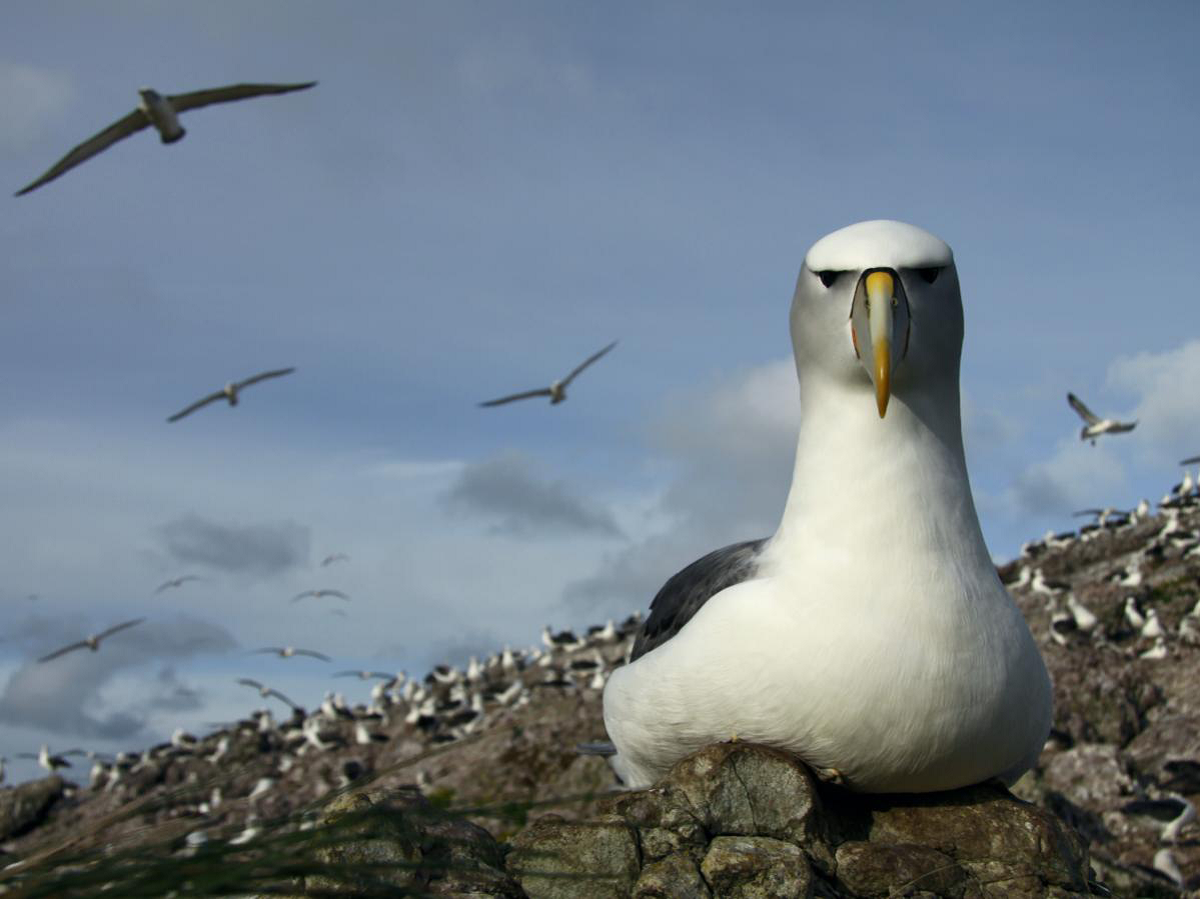 A Shy Albatross on Australia's Albatross Island; photograph by Rachael Alderman
A Shy Albatross on Australia's Albatross Island; photograph by Rachael Alderman
Claire Mason (Institute for Marine and Antarctic Studies, University of Tasmania, Australia) and colleagues have published open access in the journal Ecology and Evolution an analysis of the foraging behaviour of 96 shy albatrosses on Australia’s Albatross Island.
The open-access paper is part of a themed issue “How do marine heatwaves impact seabirds?” along with 12 other publications.
The paper’s abstract follows:
“Quantifying the intra- and interindividual variation that exists within a population can provide meaningful insights into a population's vulnerability and response to rapid environmental change. We characterise the foraging behaviour of 308 trips taken by 96 shy albatross (Thalassarche cauta) from Albatross Island across seven consecutive years. At a population level, incubating shy albatross exploited a consistent area within ca. 500 km radius of their breeding colony. During half of the trips, individuals utilised the closest shelf break to the west of the colony, where upwelling events have been reported. The other half of the trips were exclusively within the neritic zone, utilising a variety of locations within the Bass Strait. Furthermore, we found evidence of individual consistency to geographic locations, with subsequent trips by an individual more similar than random trips from all individuals in our data, both within and between years (G-test, p < .05). Between-individual variation in foraging behaviour was not meaningfully explained by age (linear regression, p > .05) or sex (t-test, p > .05) for any metric, suggesting that other intrinsic individual factors are accounting for between-individual variation in foraging trips. A localised foraging distribution is unusual for albatross, which, combined with high variation in space use between individuals demonstrated here, suggests that this species is accessing adequate resources near the colony. Overall, these findings suggest that incubating shy albatross from Albatross Island exhibit tendencies of a generalist population comprised of uniquely specialised individuals. These results suggest that this species is operating below its biological capacity in this fast-warming area and provide a baseline from which to assess future change.”
Reference:
Mason, C., Hobday, A. J., Lea, M.-A., & Alderman, R. (2023). Individual consistency in the localised foraging behaviour of shy albatross (Thalassarche cauta). Ecology and Evolution, 13, e10644. https://doi.org/10.1002/ece3.10644
22 March 2024

 English
English  Français
Français  Español
Español